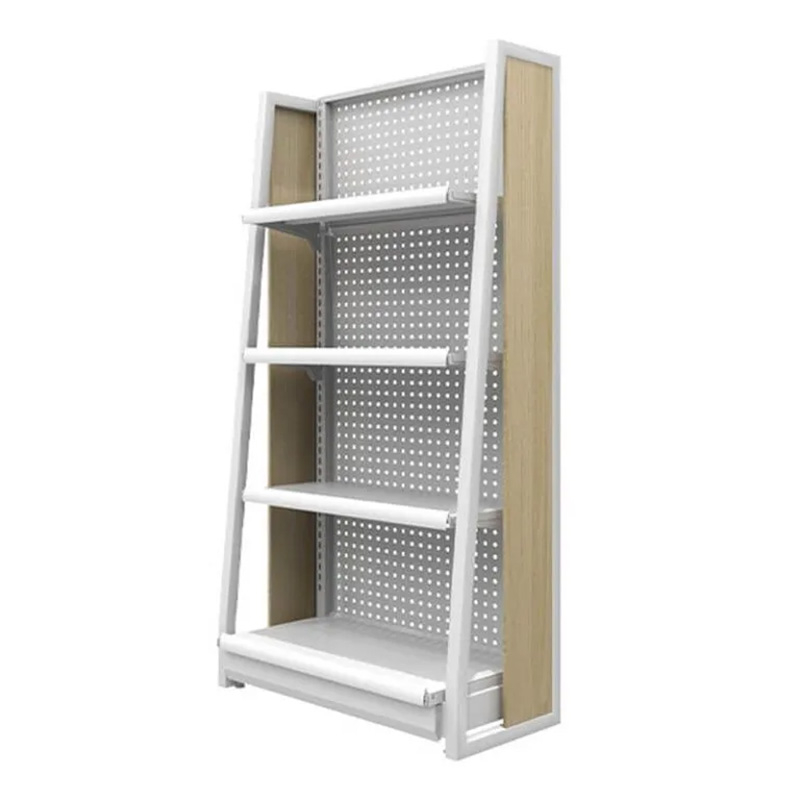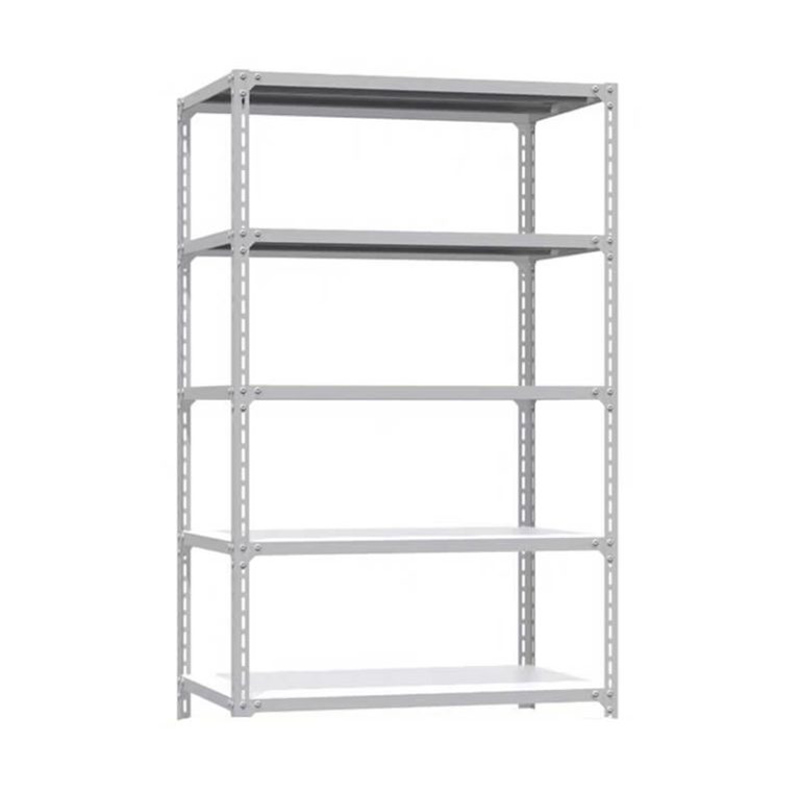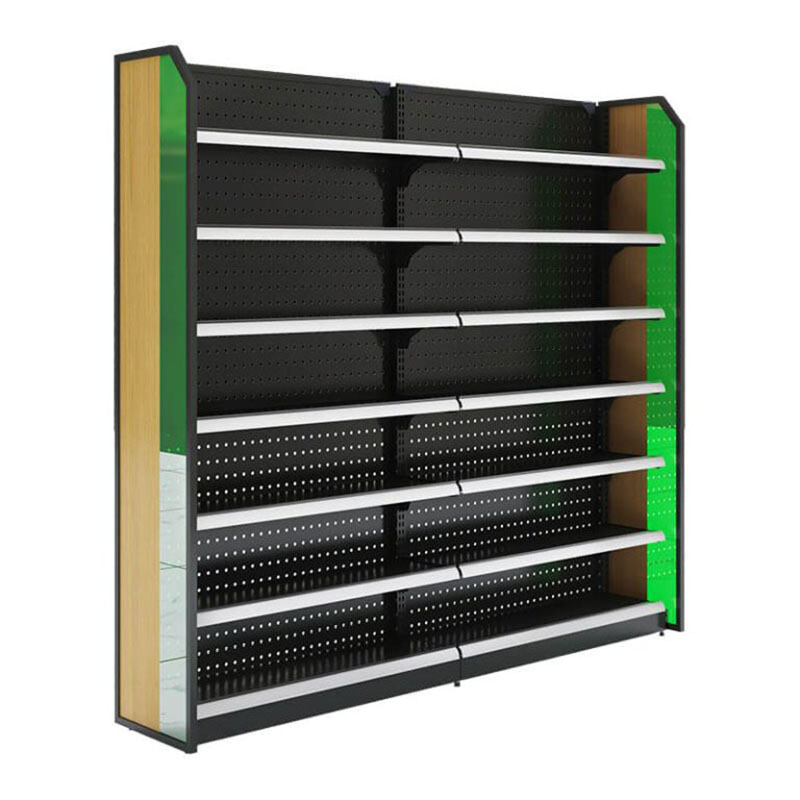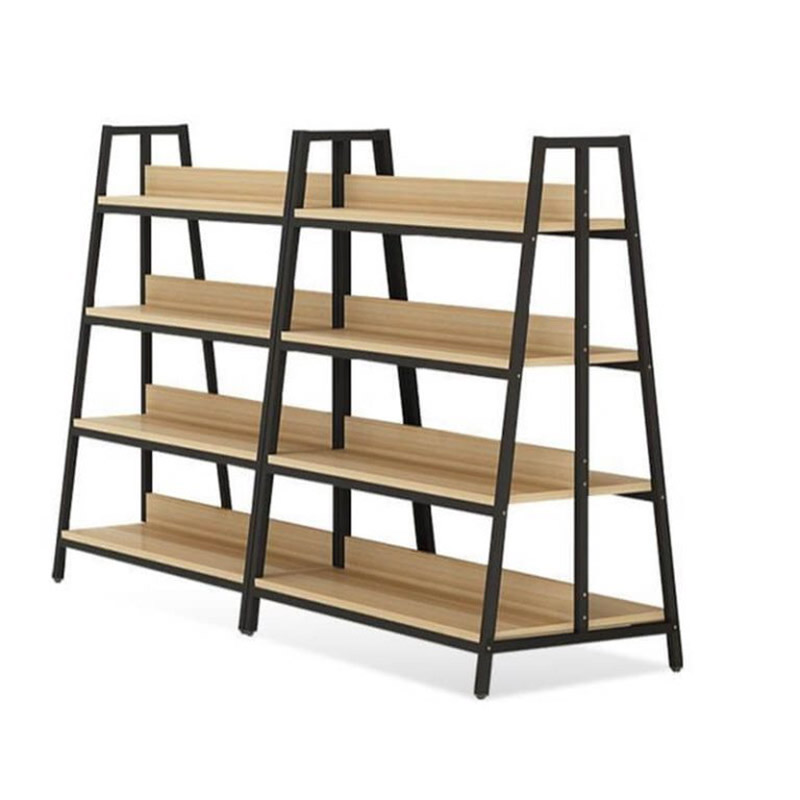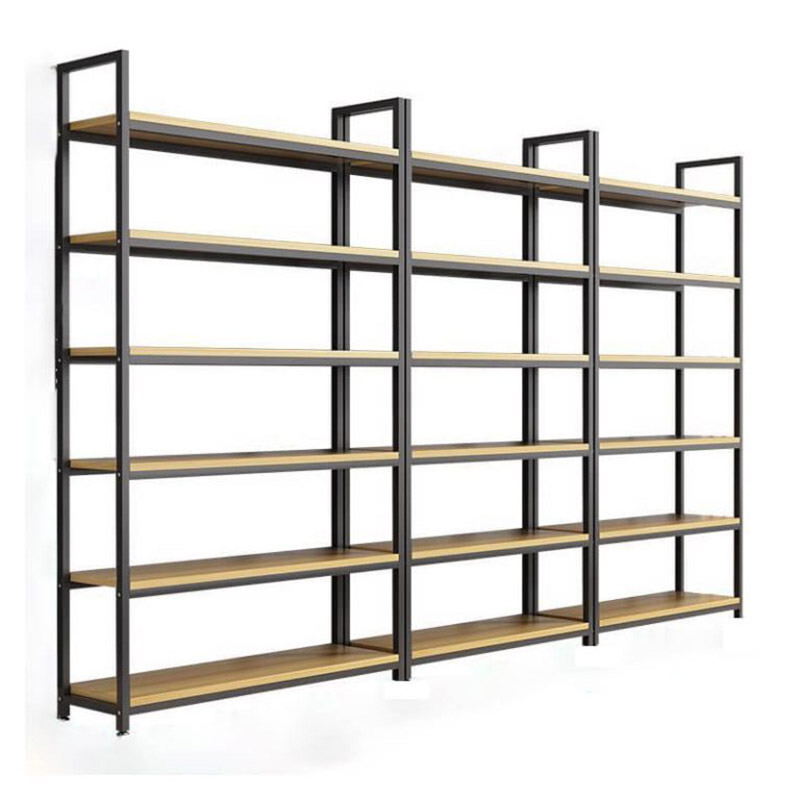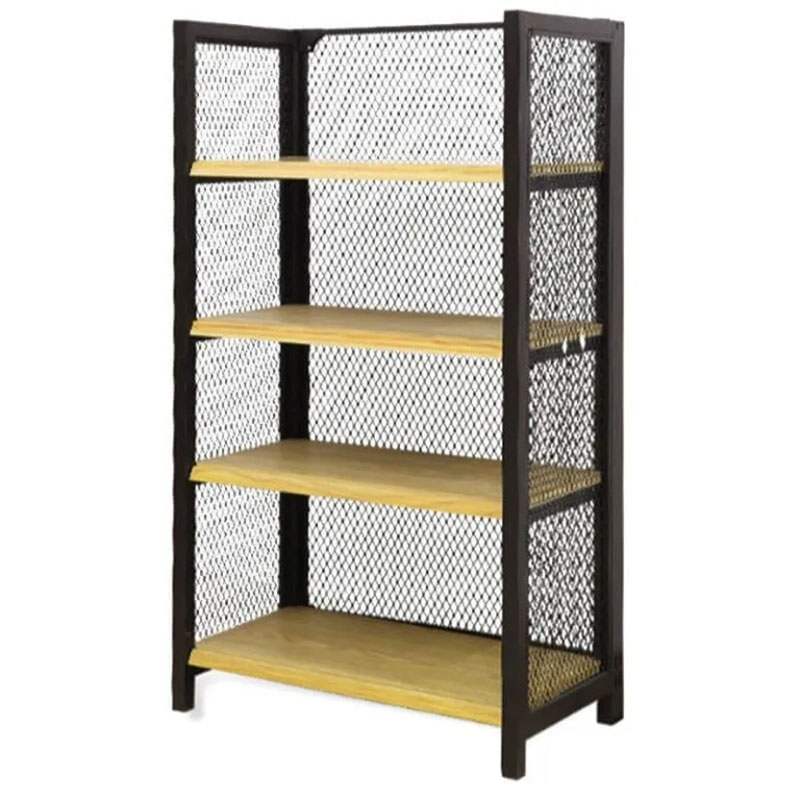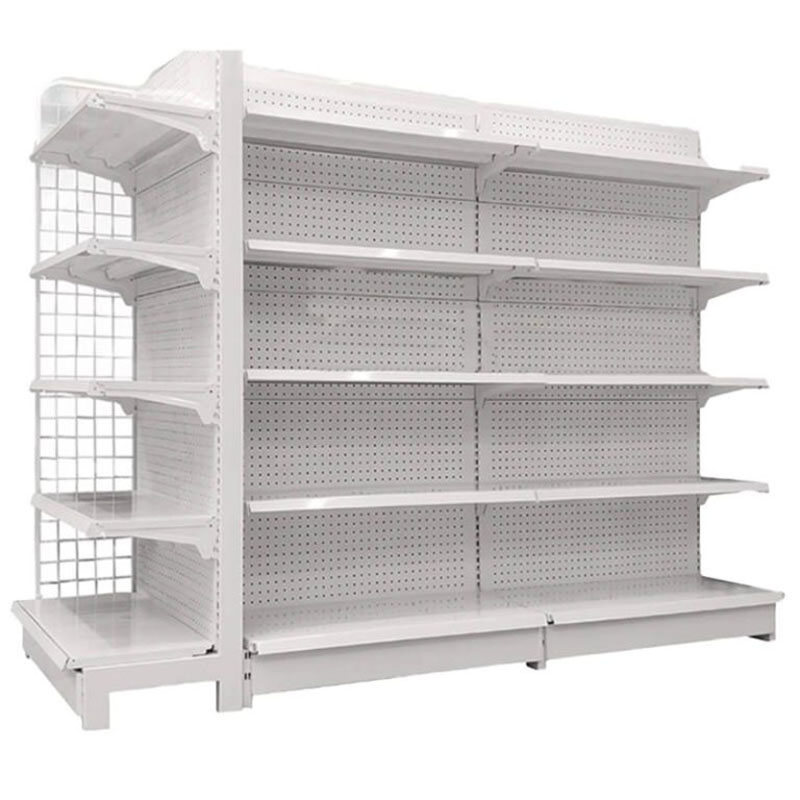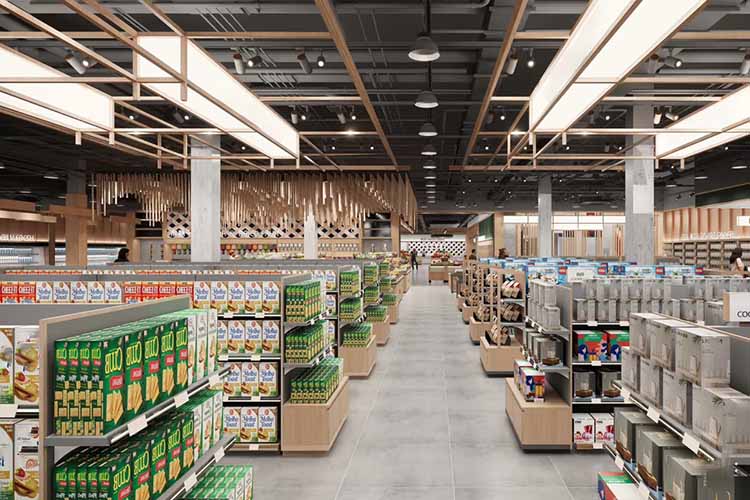
Diseño de tienda de comestibles
The grocery store layout you choose directly impacts customer experience, operational efficiency, and ultimately, your bottom line. A thoughtfully designed grocery store creates intuitive shopping paths, showcases products effectively, and reflects your brand identity. In today’s competitive retail landscape, strategic grocery store design isn’t just about aesthetics—it’s a crucial business investment that influences how customers interact with your products and space.
Grocery Store Design Ideas
Today’s grocery store interior design trends embrace open layouts with natural lighting, sustainable materials, and technology integration. Popular concepts include food-focused destinations, grab-and-go sections, and immersive shopping experiences that engage all senses through thoughtful grocery store layout planning.
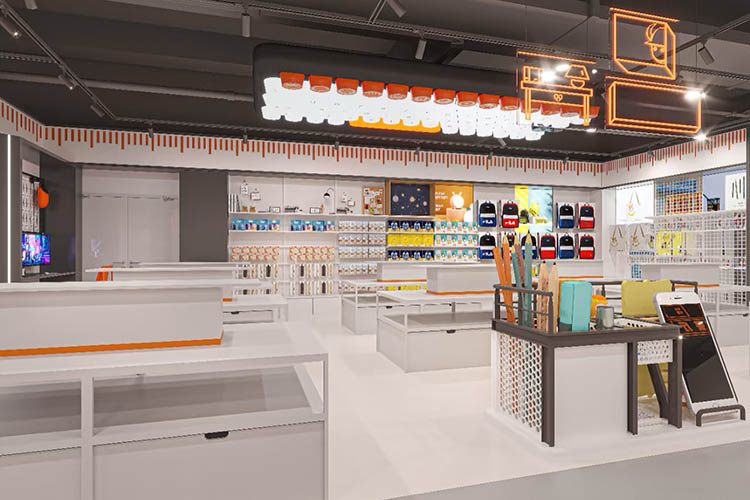
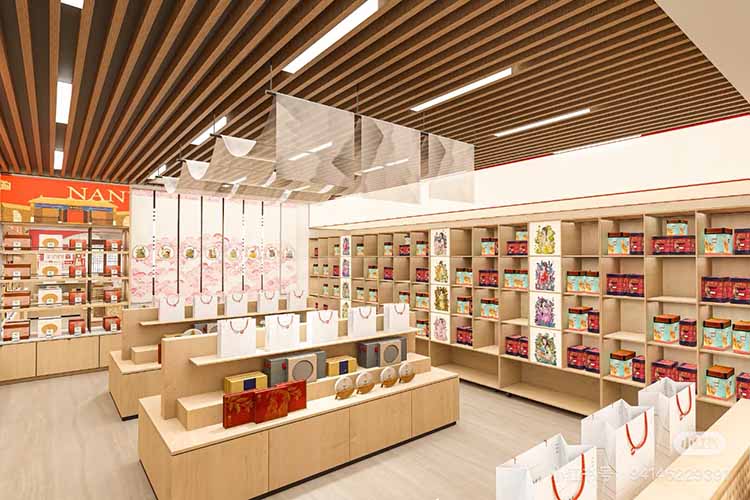
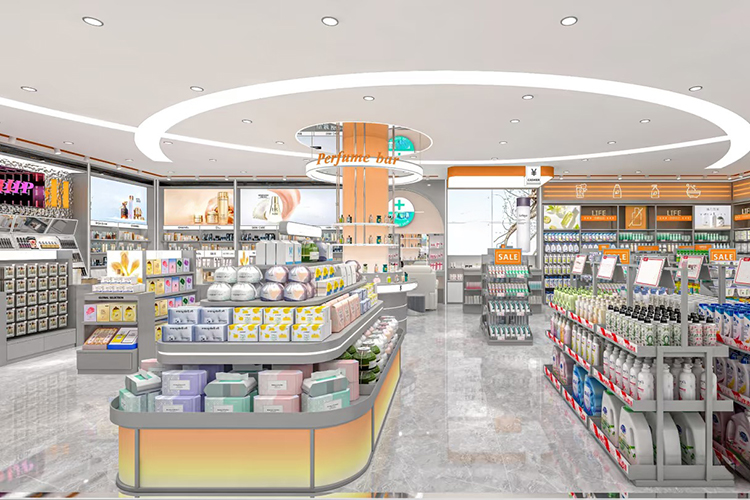
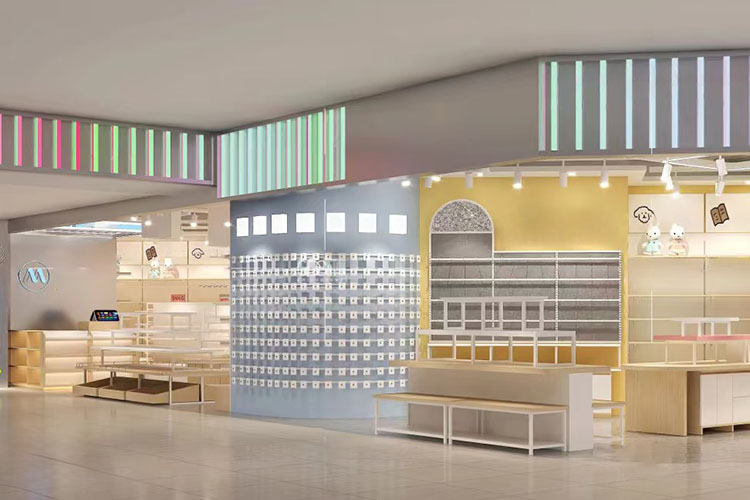
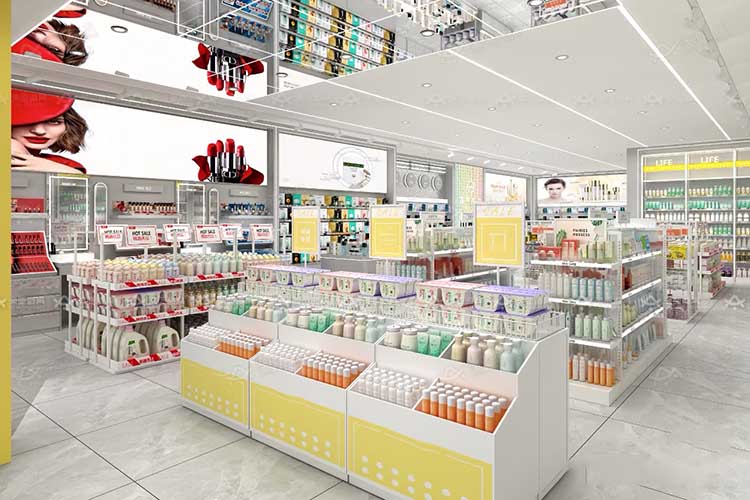
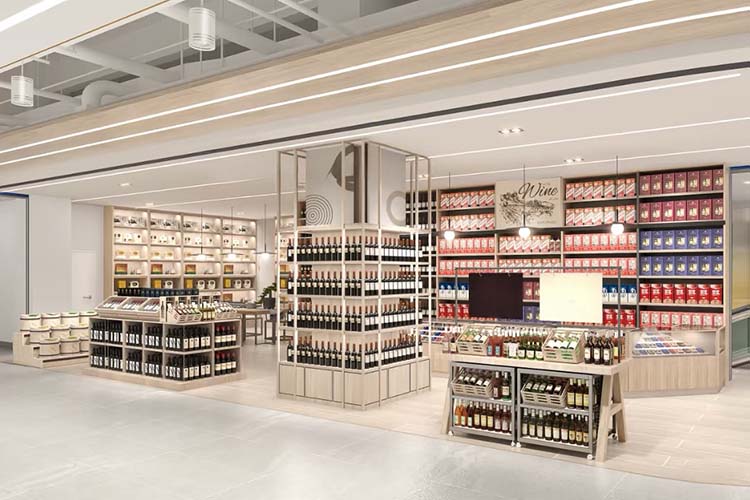
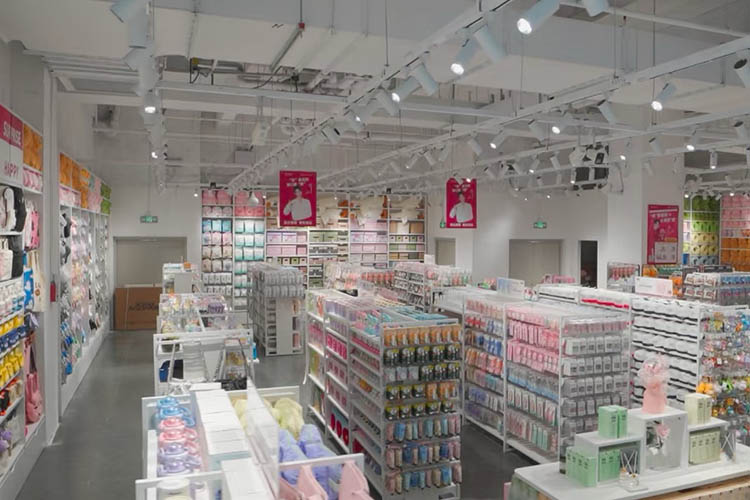
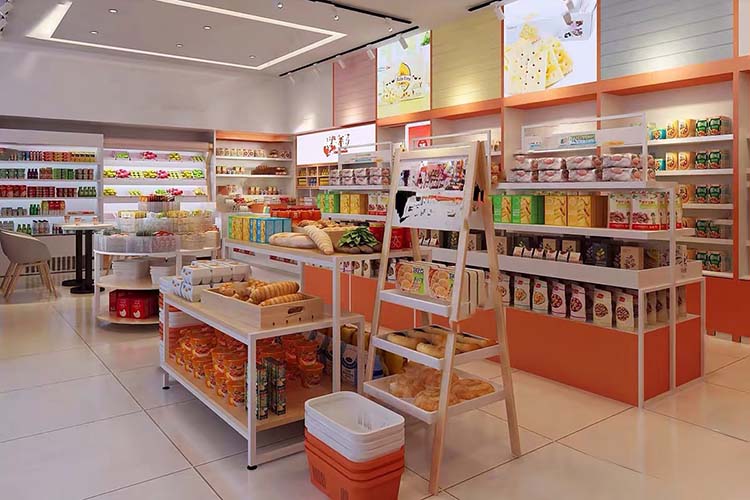
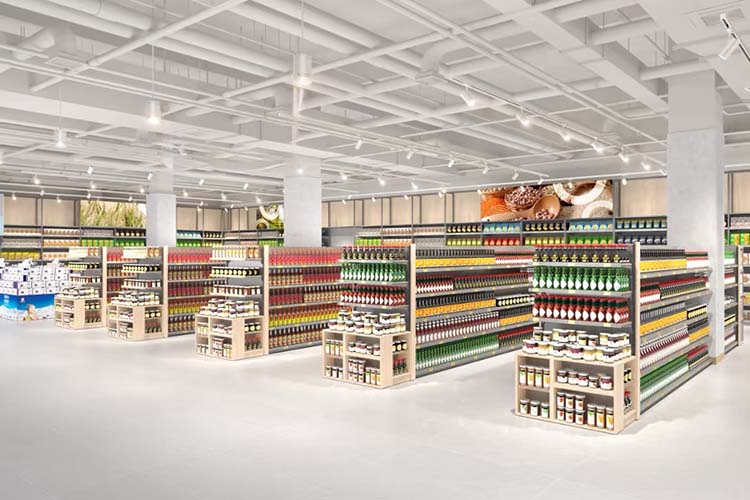
What Makes Grocery Store Designs Effective
The most successful grocery store designs seamlessly blend form and function to create spaces that work for both shoppers and staff. When evaluating grocery store interior design options, these key features separate exceptional designs from merely adequate ones:
Strategic Traffic Flow
Customers should naturally move through your store in a logical pattern that maximizes exposure to products while preventing congestion. Wide main aisles (at least 8 feet) with narrower secondary paths create a hierarchy that guides shoppers through departments.
Department Positioning
Positioning produce near the entrance creates a fresh, vibrant first impression, while placing dairy and meat sections along perimeter walls maximizes refrigeration efficiency. Bakery and deli areas benefit from central locations with strong aromas that stimulate appetite and impulse buying throughout the store.
Lighting Excellence
LED systems with adjustable color temperatures showcase produce freshness, emphasize bakery warmth, and properly display meat products. Natural light integration through skylights or large windows reduces energy costs while creating a more inviting atmosphere.
Flexible Fixture Systems
The best grocery store interior design incorporates adaptable display systems that can evolve with changing inventory and seasonal needs. Modular shelving, movable endcaps, and reconfigurable promotional areas allow for quick merchandising changes without major disruptions.
Brand-Consistent Design Elements
From the grocery store front to interior color schemes, signage, and even the checkout experience, visual consistency builds recognition and trust. Custom fixtures, strategic color use, and thoughtful material selection create distinctive environments that shoppers associate exclusively with your brand.
Grocery Store Design Layouts
The layout you choose for your grocery store significantly impacts shopping behavior, operational efficiency, and overall profitability. Each grocery store layout option offers distinct advantages depending on your space, product mix, and customer base:
This efficient design maximizes product display space and simplifies inventory management. This configuration works particularly well for medium to large stores with diverse product selections, though it can sometimes create a utilitarian shopping experience that limits browsing.
This grocery store design creates a defined main path that guides customers through the entire store before reaching the checkout. The perimeter loop typically showcases fresh departments, while interior aisles contain shelf-stable goods. This layout naturally increases exposure to high-margin specialty items and encourages discovery shopping.
Breaking from rigid patterns, this grocery store interior design uses curved paths and varied fixture heights to create a more organic shopping experience. This approach works exceptionally well for specialty grocers, gourmet shops, and stores emphasizing unique shopping experiences.
This increasingly popular grocery store design divides the space into distinct shop-within-a-shop areas, each with unique design elements reflecting their product categories. Though more complex to implement, boutique layouts drive higher margins and strengthen department identity.
Many modern grocery store designs combine elements from multiple layout types to optimize different store areas. For example, a grid layout for staples combined with free-flow sections for specialty foods creates efficiency where needed while encouraging discovery in high-margin categories.
iYubo Offers One-stop Grocery Store Design Solution
We combine industry knowledge with creative innovation to create distinctive shopping environments that optimize customer flow, maximize sales per square foot, and strengthen brand identity—all while ensuring operational efficiency for your team.
Essential Display Fixtures for Effective Product Presentation
The backbone of any grocery store layout, proper shelving maximizes product visibility while optimizing space utilization. Gondola shelving remains the industry standard due to its versatility and customization options. Modern systems feature adjustable shelves, integrated lighting, and modular components that adapt to changing needs. Look for units with:
- Adjustable shelf heights and depths
- Durable powder-coated finishes
- Load capacities appropriate for your products
- Compatible accessories like dividers and pushers
- End caps for promotional displays
Temperature-controlled displays are critical for perishable items and represent a significant investment in your grocery store design. Options include:
- Multi-deck open cases for grab-and-go items
- Glass-door reach-in units for beverages and dairy
- Service cases for meat and seafood departments
- Island cases for frozen foods
- Hybrid cases with convertible temperature zones
Fresh produce presentation significantly impacts customer perception of your entire store. Essential produce fixtures include:
- Slanted display tables with drainage systems
- Multi-tier risers for vertical merchandising
- Mobile bins for flexible layouts
- Misting systems for leafy greens
- Refrigerated and ambient display options
These high-margin departments require specialized display solutions:
- Self-service bakery cases with acrylic doors
- Service counters with angled display decks
- Behind-counter shelving and risers
- Bread racks and basket displays
- Hot and cold food merchandisers
- Soup stations and salad bars
Often overlooked in grocery store design, checkout areas significantly impact final impressions and impulse sales:
- Counter systems with conveyor belts
- Cash wraps for express lanes
- Queue management fixtures
- Impulse merchandise displays
- Bagging stations and bag storage
Distinctive fixtures for high-margin categories enhance your grocery store interior design:
- Wine racks and beverage centers
- Bulk food dispensers and bins
- Health and beauty merchandisers
- Seasonal and promotional displays
- Demo and sampling stations
Small Grocery Store Design Tips
Creating an effective small grocery store layout requires strategic thinking to deliver a complete shopping experience in a compact footprint. With thoughtful planning, even modest spaces can offer comprehensive product selections while maintaining comfortable shopping environments.
Vertical Merchandising
When floor space is limited, think upward. Utilize wall space with taller shelving units (up to 78″ in selling areas) while keeping middle shelves at eye level for premium products. Install overhead hanging systems for lightweight items and promotional materials. This vertical approach can increase your product capacity by 25-40% without expanding your footprint. Remember to provide reaching tools for top-shelf access and ensure proper lighting illuminates all display levels.
Multi-Functional Fixtures
In small grocery store layouts, every fixture should serve multiple purposes. Select gondolas with integrated endcaps, display cases with storage underneath, and checkout counters with merchandise display capabilities. Modular systems that can be reconfigured for seasonal needs maximize flexibility without requiring additional fixtures. Look for convertible units that can transition between ambient, refrigerated, and frozen applications as your product mix evolves.
Strategic Department Placement
Carefully position departments to create efficient shopping patterns in limited spaces. Place high-demand destinations (produce, dairy, meat) at separate corners to encourage movement throughout the store. Position complementary categories adjacent to each other to facilitate meal-planning purchases. This thoughtful arrangement maximizes cross-selling opportunities while preventing congestion in any single area.
Open Sightlines
Small grocery store design benefits from visual openness that prevents claustrophobic feelings. Maintain clear sightlines across departments by limiting fixture heights in central areas and using transparent or open-back displays where appropriate. This visibility creates a sense of spaciousness while helping customers quickly orient themselves and locate departments. Good sightlines also enhance security and allow staff to monitor the store more effectively.
Efficient Checkout Solutions
Optimize the checkout experience for small spaces with flexible solutions. Consider mobile POS systems that allow for checkout anywhere in the store during busy periods. Design compact checkout stations that can be opened or closed based on traffic patterns. Position impulse merchandise vertically around checkout areas rather than requiring additional counter space. These approaches maintain transaction efficiency without dedicating excessive space to rarely-used checkout lanes.
Outside-the-Box Solutions
Think creatively about underutilized spaces. Install narrow shelf units in end-of-aisle positions, use corner spaces for angled displays, and consider ceiling-hung signage and wayfinding elements. Even small architectural features like window ledges and alcoves can become merchandising opportunities with custom fixture solutions. This maximizes every square inch while adding visual interest to your grocery store interior design.
FAQs on Grocery Design
The critical elements include an intuitive grocery store layout that guides customer flow, strategic department positioning, effective lighting systems, flexible fixture solutions, and brand-consistent design elements. Your design should balance operational efficiency with an engaging shopping experience while reflecting your unique brand identity.
Grocery store design costs vary widely based on store size, design complexity, and fixture quality. Basic design services typically range from $5-15 per square foot, while comprehensive design-build projects including fixtures and implementation can range from $75-200+ per square foot. Most retailers see positive ROI within 12-24 months through increased sales and operational efficiencies.
Main aisles in grocery store layouts should be 8-10 feet wide to accommodate two-way traffic with shopping carts, while secondary aisles can be 5-7 feet wide. ADA compliance requires a minimum 36-inch clear path throughout the store. Wider aisles improve the shopping experience but reduce total display space, so balance is essential.
Enhance your small grocery store design with light color schemes, excellent lighting (especially vertical illumination), clear sightlines across departments, and consistent flooring throughout. Use lower fixtures (around 54″) in central areas with taller units (up to 78″) on perimeter walls. Strategic mirror placement in select areas can also create the illusion of expanded space.
Start with versatile gondola shelving systems that can be reconfigured as needs change. Consider pre-owned refrigeration units from reputable suppliers for significant savings. Modular produce displays allow for expansion without replacing existing fixtures. Focus quality investments on high-visibility areas like checkout and service counters while using more economical options in utility areas.
Design a clear path that guides customers through the entire store, typically in a counterclockwise pattern (which research shows most shoppers prefer). Position high-demand departments (produce, meat, dairy) at different points to encourage complete store navigation. Create a transition zone just inside the entrance where customers can adjust to the environment before making purchase decisions.
Layer different lighting types: ambient lighting at 30-50 footcandles for general illumination, accent lighting at 3-5 times ambient levels to highlight products, and task lighting for functional areas like checkout and service counters. LED systems with adjustable color temperatures (3000K-4000K) provide energy efficiency while properly showcasing different product categories.
iYubo provides end-to-end grocery store design solutions, from initial concept development through implementation. Our services include custom fixture design, materials selection, color scheme development, size customization, logo integration, and brand packaging. We combine retail design expertise with manufacturing capabilities to create distinctive grocery environments that enhance both customer experience and operational efficiency.
Trabaja con iYubo para optimizar la visualización de tu tienda.
Como fabricante y proveedor de exhibidores minoristas personalizados, ofrecemos una gama completa de exhibidores y accesorios con calidad confiable para cumplir con todos los requisitos minoristas. Cuéntenos sus necesidades y nuestros equipos de producción y abastecimiento le brindarán la solución más rentable y eficiente.
